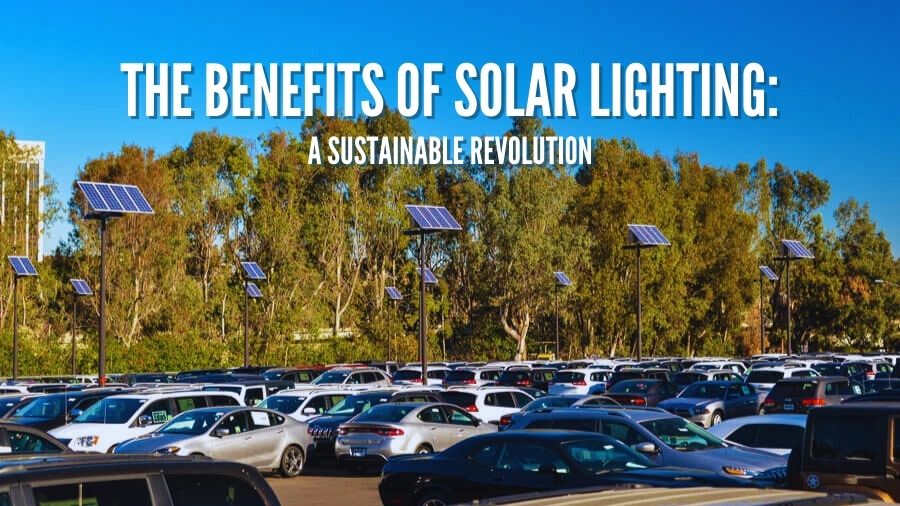


Once upon a time, in a small, bustling town nestled at the edge of a lush forest, the people faced a challenge. Every evening, as the sun dipped below the horizon, their streets plunged into darkness. Traditional electric lights were costly and harmed their beloved nature. Then, one day, they discovered the magic of solar lighting. This simple yet transformative solution brought not only light to their paths but also hope for a brighter, greener future.
Solar lighting is a beacon of sustainability, leading the way toward a greener and more environmentally friendly future. Unlike traditional lighting that relies on electricity generated from fossil fuels, solar lights harness energy directly from the sun, a clean and renewable resource. This shift towards solar lighting has the potential to reduce carbon emissions and combat climate change significantly.
The U.S. Department of Energy estimates that solar energy systems can lower carbon emissions by about 100 million metric tons annually in the United States alone. This reduction in carbon emissions is equivalent to taking approximately 21 million cars off the road for an entire year. By transitioning to solar lighting, we can make a substantial impact on our environment and contribute to the global efforts to combat climate change.
In addition to reducing carbon emissions, solar lighting also offers numerous other environmental benefits. Unlike traditional lighting, solar lights do not produce any air or water pollution during operation. They do not release harmful greenhouse gases or contribute to the depletion of natural resources. Solar lighting is a clean and sustainable solution that helps preserve our beloved nature and protect the delicate balance of our ecosystems.
One of the most compelling advantages of solar lighting is its cost-effectiveness. The long-term savings on electricity bills offset the initial investment. A study by the International Renewable Energy Agency (IRENA) reveals that solar photovoltaic (PV) costs have dropped by 82% since 2010, making solar lighting an increasingly affordable option.
With the significant drop in solar photovoltaic costs, solar lighting has become a financially viable choice. The initial investment pays off in the long run, as the savings on electricity bills accumulate over time. Businesses and municipalities can take advantage of the financial benefits it offers.
By switching to solar lighting, companies can reduce their operational costs and allocate resources to other important areas of their business. Similarly, local governments can invest in solar lighting infrastructure, saving taxpayer money in the long term and freeing up funds for other community projects and initiatives.
Solar lighting promotes energy independence. By using a decentralized power source, communities reduce their reliance on the national grid, mitigating the impact of power outages and energy shortages. This aspect is crucial in remote or underdeveloped areas where electricity is scarce or unreliable.
In addition to energy independence, solar lighting systems also contribute to a more stable grid. This is evident in the efforts being made by California through its implementation of Title 24 lighting standards. By reducing the overall energy usage from the grid, solar lighting plays a vital role in ensuring a reliable and resilient power supply for communities.
Solar lights require minimal maintenance compared to traditional lighting. They are built to withstand various weather conditions and have a longer lifespan. As the Solar Energy Industries Association reported, solar panels, a key component of solar lights, can last 25-30 years or more, ensuring long-term reliability.
Commercial light fixtures also have a long lifespan, up to 100K hours. This remarkable durability guarantees reliable illumination for extended periods and significantly reduces maintenance costs. Frequent bulb replacements and repairs are necessary with traditional lighting, resulting in additional expenses and inconvenience for communities. These savings can free up valuable resources that can be allocated to other important community projects.
Well-lit streets and public spaces are safer. Solar lighting provides consistent illumination even during power cuts, enhancing safety for pedestrians and drivers. A National Renewable Energy Laboratory study found that street lighting can reduce crime rates by up to 20%.
Furthermore, solar lighting offers a reliable and continuous light source, even during power outages. This is particularly crucial in areas prone to natural disasters or areas with unreliable electricity grids. Solar lights continue to shine when traditional lighting fails during these situations, providing a sense of security and comfort to the community.
In many parts of the world, the lack of lighting after sunset poses significant challenges to accessing education and healthcare services. Schools and clinics are forced to close their doors early without adequate lighting, limiting the opportunities for learning and receiving essential medical care. However, with the implementation of solar lighting, these operational hours can be extended, ultimately improving access to these critical services.
Solar lighting extends operational hours for schools and clinics and brings a sense of reliability and stability to these essential services. In areas prone to frequent power outages or with unreliable electricity grids, solar lighting becomes a lifeline for education and healthcare. When traditional lighting fails during these situations, solar lights continue to shine brightly, providing a constant source of illumination and a sense of security for students and patients. This reliability ensures that education and healthcare services are not disrupted, even in the face of unforeseen circumstances.
The story of the small town is a microcosm of a global shift towards sustainable living. Solar lighting illuminates our streets and leads us toward an environmentally friendly, cost-effective, and energy-independent future. As we embrace this clean energy revolution, we not only brighten our paths but also pave the way for future generations.
